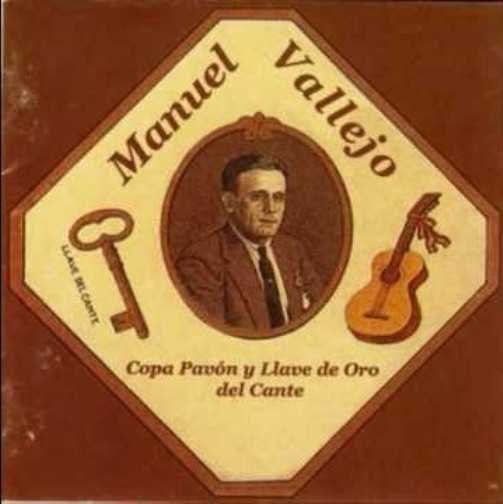Manuel Vallejo

Full name
Place of birth
Biography
Manuel Jiménez Martínez de Pinillos was born at twelve o´clock in the morning on the 15th of October in 1891 at number 1 calle Padilla in Sevilla, in the heart of the neighbourhood of San Marcos Some experts, guided by declarations made by the singer himself, also indicating that Vallejo was born in Sanlúcar de Barrameda, which it has not been proven He died on the 7th of August in 1960 in the Central Hospital in Sevilla, today the headquarters of the Andalusian Parliament, after six days ill his life was taken away in consequence of a apoplexy From a very young age Vallejo entered into contact with flamenco At the age of fifteen he frequented the Kiosco de Pinto in the Alameda de Hércules, where he took turns with Pastora Pavón, Tomás and Currito el de la Geroma, amongst others The first time that Vallejo appeared in public with this name, according to Manuel Bohórquez´s narrative, was on a poster on the 5th of June in 1919, in a charity performance organised for Antonio Silva el Portugués in El Variedades in calle Trajano in Sevilla He shared stage that night with El Cojo de Málaga, Fernando el Herrero, Las Pompis, El Gloria, El Colorao de la Macarena, and Niño Ricardo, who was then announced as Manolito el Carbonero The singer recorded his first album with the Pathé label in 1923 accompanied on guitar by Ramón Montoya From here on his stardom commenced He was in demand in all the cities in Spain and turned into one of the singers of 'saetas´ most in demand at Easter in Sevilla At this point we reach 1925 The businessman Pavón from Madrid created his theatre in calle Embajadores and the so called Pavón Cup, which was celebrated on the night of the 24th of August Manuel Escacena, El Cojo de Málaga and Pepe Marchena, amongst others participated in this competition However the jury, presided by Antonio Chacón, decided to award the prize to Vallejo, in who the maestro from Jerez had seen a successor It is also curious that, it appears, that the day after a party was celebrated in Villa Rosa and Chacón made a commented to Vallejo that he had given him the trophy because he was the best, but the Vieja (this was the nick name that he used to refer to Pepe Marchena) would earn more money than him After this, Vallejo turned into a great figure of song, being the only one capable of filling theatres such as the Maravillas and the Romea in Madrid during a whole month One year later, the catastrophe struckThe Pavón theatre once more held the new edition of the competition and Vallejo once more presented himself However, the prize fell into the hands of Manuel Centeno also from Sevilla It was said that Vallejo was better but, it wasn´t profitable to award the cup to the same singer two years running For this reason, the owners of the theatre rubbed their hands together once more to solve the injustice They remembered that old Gold Key of El Nitri and decided to make amends with the singer from Sevilla awarding him the Second Key of Song An act was organised for the 5th of October for the award and to which José Cepero, Angelillo, Manuel Escacena and El Chata de Vicálvaro assisted However it was Manuel Torre himself, who also performed regularly in the Pavón, who handed him the prize In this way he was competing directly with Romea, where Centeno performed daily and had gained fame for his splendid 'saetas´From here on, Vallejo started to be known as the Fleta del Cante, as he was compared to the oscines tenor, who was a very good friend of his Until the outbreak of the civil war, he recorded numerous albums, however the conflict put a stop to his aspirations After the white flag, he returned to the stages, and even worked for Juanito Valderrama´s company He continued recording until 1950 with the record company Columbia, accompanied by the guitar of Paco Aguilera However the last ten years of his life were sad Vallejo began to decline although this doesn´t take away the fact that time still keeps him in its memory as one of the greatest singers in history His 'bulerías´, of which he was practically the father and his 'granaínas´ and 'tarantas´, 'seguiriyas´ and 'fandangos por soleá´ as we know them today are still there





